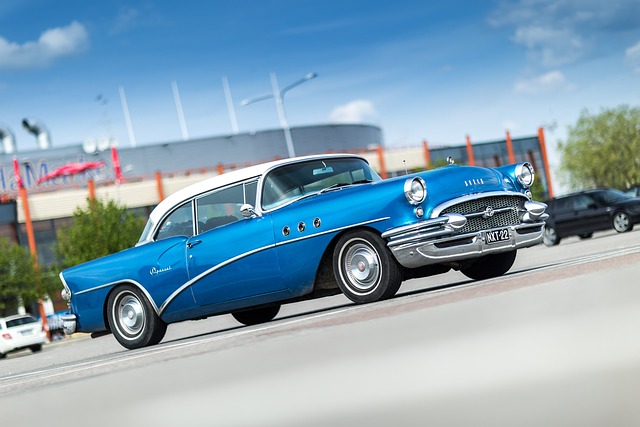The article provides comprehensive information on the mandatory VIN (Vehicle Identification Number) verification process for vehicle registration in California. This process is essential for confirming a vehicle's authenticity and aligning its history with current records, which helps prevent fraud and ensure road safety. According to the California DMV, a certified vin verifier or vin inspector—authorized by the NHTSA—must physically examine the VIN on the vehicle and cross-reference it with official databases to check for any past issues such as theft, salvage, flood damage, or being previously totaled. This verification can be done at authorized DMV offices, certified dealerships, salvage yards, or independent service centers. Once the vehicle passes this inspection, it becomes vin verified, facilitating smooth registration in compliance with state regulations. Vehicle owners are advised to use professional vin verifiers or inspectors, which can be found by searching "vin inspection near me," and to ensure all necessary documentation is ready for the DMV vin verification process to avoid delays. Key terms include vin verification, vin verifier, vin inspector, vin verified status, verify vin number, and finding a vin inspection service nearby.
When navigating California’s vehicle registration process, understanding the DMV’s VIN verification guidelines is paramount. This article demystifies the steps involved in verifying your vehicle identification number (VIN) and the critical role it plays in maintaining a transparent and secure vehicle registry system. We’ll explore the essential requirements for VIN verification, the documents you need to prepare, and how to locate a certified vin verifier or inspector in California. Whether you’re a first-time registrant or an experienced vehicle owner, this guide will provide clarity on the DMV vin verification process, from appointment booking to post-verification registration and titling. Learn how accurate VIN verification protects buyers from title washing and fraudulent activities, influences insurance rates, and ensures safety with correct vehicle information. With our expert tips for a smooth inspection experience and advice on finding a trusted vin inspector, you’ll be well-equipped to manage this vital aspect of vehicle ownership in California.
- Understanding California DMV VIN Verification Requirements
- – The Role of VIN Verification in Vehicle Registration
- – What Constitutes a Valid VIN Number Verification Process
- – Documents Required for VIN Inspection at the DMV
Understanding California DMV VIN Verification Requirements

When registering a vehicle in California, VIN verification is an integral step to ensure that the vehicle’s history and authenticity align with its current presentation. The California Department of Motor Vehicles (DMV) mandates this process to prevent fraud and to maintain road safety. A VIN verifier or vin inspector, certified by the National Highway Traffic Safety Administration (NHTSA), must carry out the vin number verification. This involves a thorough examination of the vehicle’s VIN to confirm its unique identifier matches the details registered with the DMV. The process also ensures that the vehicle has not been reported as stolen, is free from branding such as ‘junk’, ‘salvage’, or ‘flood damage’, and that it has not been previously totaled.
To initiate vin verified status for your vehicle in California, you must approach an authorized DMV vin verifier or vin inspector. This individual will use specialized equipment to decode the VIN and cross-reference it with the official records. The vin inspection near me can be conducted at authorized dealerships, registered salvage yards, or independent service centers that have the necessary certification. Once the vin number verification is complete and the vehicle passes the check, you can proceed with the registration process at the DMV, ensuring compliance with California’s stringent vehicle registration requirements. Always verify vin details to avoid complications during registration and ensure that your vehicle information is accurate and up-to-date.
– The Role of VIN Verification in Vehicle Registration

When registering a vehicle in California, the California Department of Motor Vehicles (DMV) requires a precise and accurate Vehicle Identification Number (VIN) verification process to ensure the authenticity and safety of the vehicle. This VIN is a unique identifier for every motor vehicle, consisting of 17 characters that provide critical information about the vehicle’s make, model, year, and manufacturing details. The VIN verification process is a critical step in the registration procedure, as it helps to prevent fraudulent activities such as title washing or odometer tampering. A qualified vin verifier, often referred to as a vin inspector, must physically examine the VIN on the vehicle to confirm its authenticity and match it with the records of the DMV’s database. This vin number verification is essential to ascertain that the vehicle’s history and status are correctly represented. The DMV vin verification guidelines mandate that this inspection must be conducted by a licensed vin inspector, ensuring a standardized process across California. Individuals looking for vin inspection services can search for “vin inspection near me” to find certified professionals who can assist with this requirement. By verifying the VIN, vehicle owners ensure compliance with state regulations and contribute to road safety, as each vehicle’s history is accurately documented and accessible to relevant authorities.
– What Constitutes a Valid VIN Number Verification Process

When a vehicle owner needs to register their car in California, one of the critical steps in the process is ensuring that the Vehicle Identification Number (VIN) is valid and accurate. The DMV vin verification is a systematic check that serves as a cornerstone for vehicle ownership transfer and registration. A legitimate VIN number verification involves a series of processes where a qualified VIN inspector examines the VIN plate or etching on the vehicle to confirm its authenticity. This verification must be conducted according to strict guidelines to ensure that the VIN corresponds with the vehicle’s make, model, year, and other critical identifying information.
The process of verifying a vin number typically begins with the visual inspection by a trained vin verifier, who checks the VIN against the vehicle’s documentation to ascertain its uniqueness and proper placement. The VIN should be clearly visible and easily readable, often found on the vehicle’s dashboard on the driver’s side, or on parts like the engine, frame, or chassis. After the physical verification, the vin inspector will input the VIN into a database to check its validity against national databases such as the National Motor Vehicle Criminal Database and the National Insurance Crime Bureau (NICB) database. This step is crucial for ensuring that the vehicle has not been reported stolen, is not a salvaged or flood-damaged vehicle, and has a clean title. If the VIN verification passes all these checks, it confirms that the vehicle’s history is accurately represented by its VIN, which is essential for safety and legal compliance. For those in need of vin inspection near me, locating a certified DMV vin verifier or inspector can be done through local DMV offices or authorized service providers. Utilizing their expertise ensures that your vehicle registration process goes smoothly and complies with California’s stringent vehicle registration requirements.
– Documents Required for VIN Inspection at the DMV

When navigating the process of registering a vehicle in California, vin number verification is a critical step. The California Department of Motor Vehicles (DMV) requires a thorough vin inspection to ensure that the vehicle’s identification number matches the details on the title and registration application. This vin verified process is essential for title and registration purposes, as it confirms the authenticity of the vehicle and its history. To initiate the DMV vin verification, you must present specific documents during the vin inspection near me. Typically, these include the signed and completed Application for Title or Registration (form RT 1), a valid photo ID, and proof of insurance. Additionally, the vehicle must be present at the time of the inspection so that the certified vin verifier, who is a trained DMV employee, can inspect the vin plate or etching on the vehicle’s exterior to ensure its accuracy against the provided documents. The vin verifier will then stamp the form RT 1 to indicate that the vin has been verified, which is a necessary step before the vehicle can be registered in California. It’s important to gather all required documents and visit a DMV office or an approved third-party provider for this vin inspection near me to avoid any delays in your registration process. Remember to have your vin number verification details at hand to streamline the vin verification procedure at the DMV.
When navigating the process of registering a vehicle in California, adherence to the DMV’s VIN verification guidelines is paramount. This article has demystified the role of VIN verification within the registration framework, elucidated the components of a valid VIN number check, and outlined the necessary documents for a successful DMV VIN inspection. For vehicle owners and potential buyers alike, understanding these procedures through a vin verifier or vin inspector is crucial to ensure compliance and legal roadworthiness. Whether you’re seeking a vin inspection near me or simply need to verify your vin number, the DMV’s vin verified process acts as a safeguard for both vehicle integrity and public safety. By familiarizing yourself with these guidelines, you can confidently proceed with your registration, upholding the standards set by California’s DMV for vehicle identification and ownership transfer.
